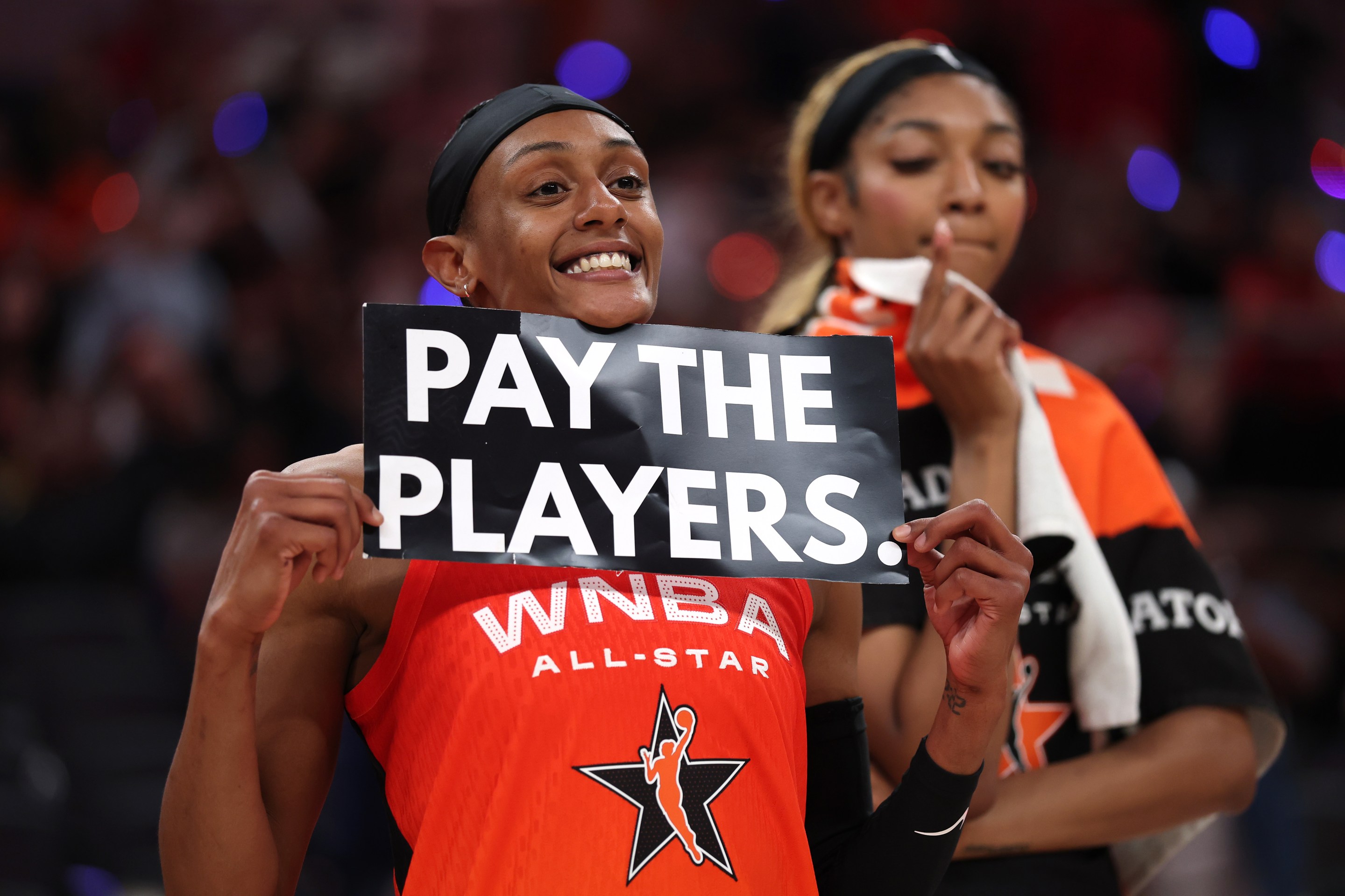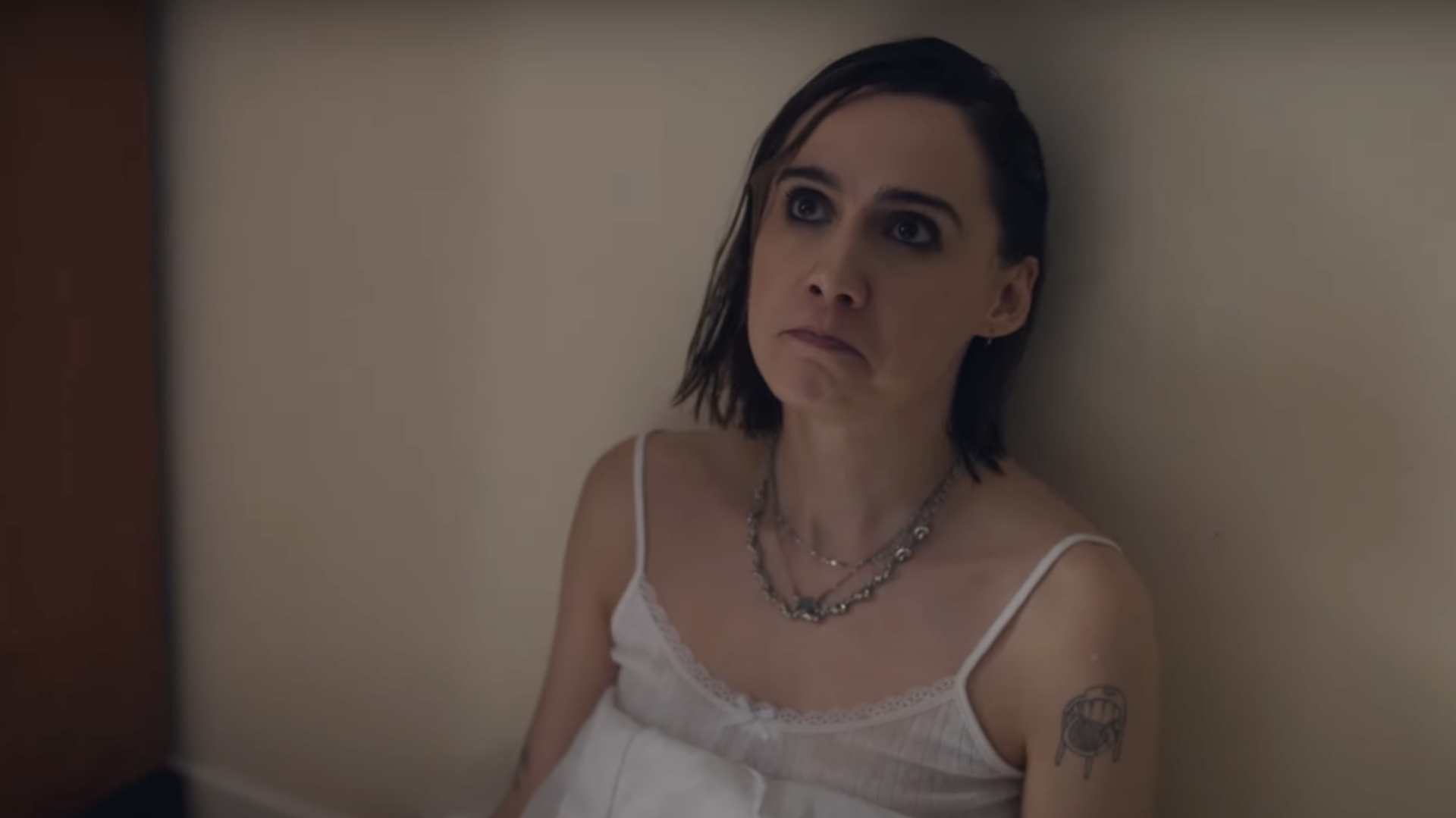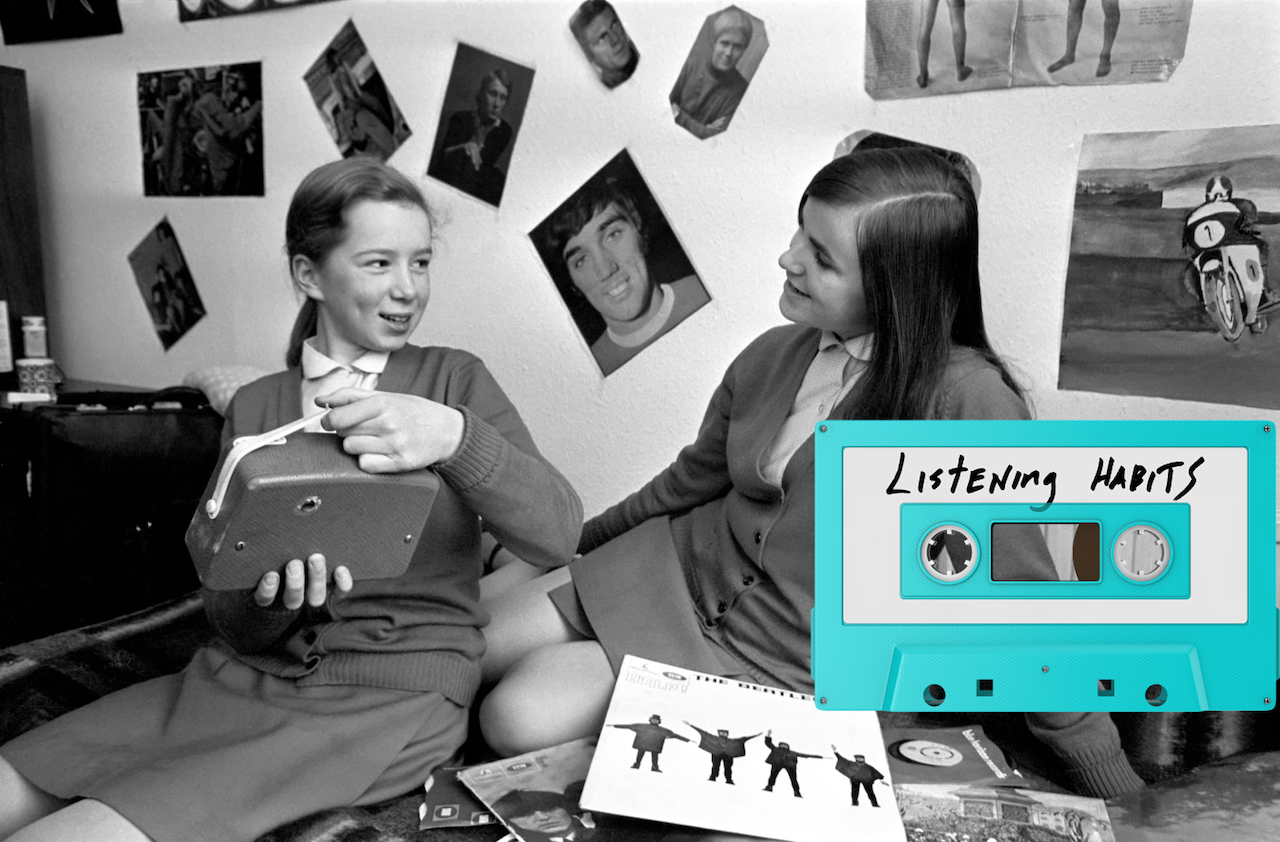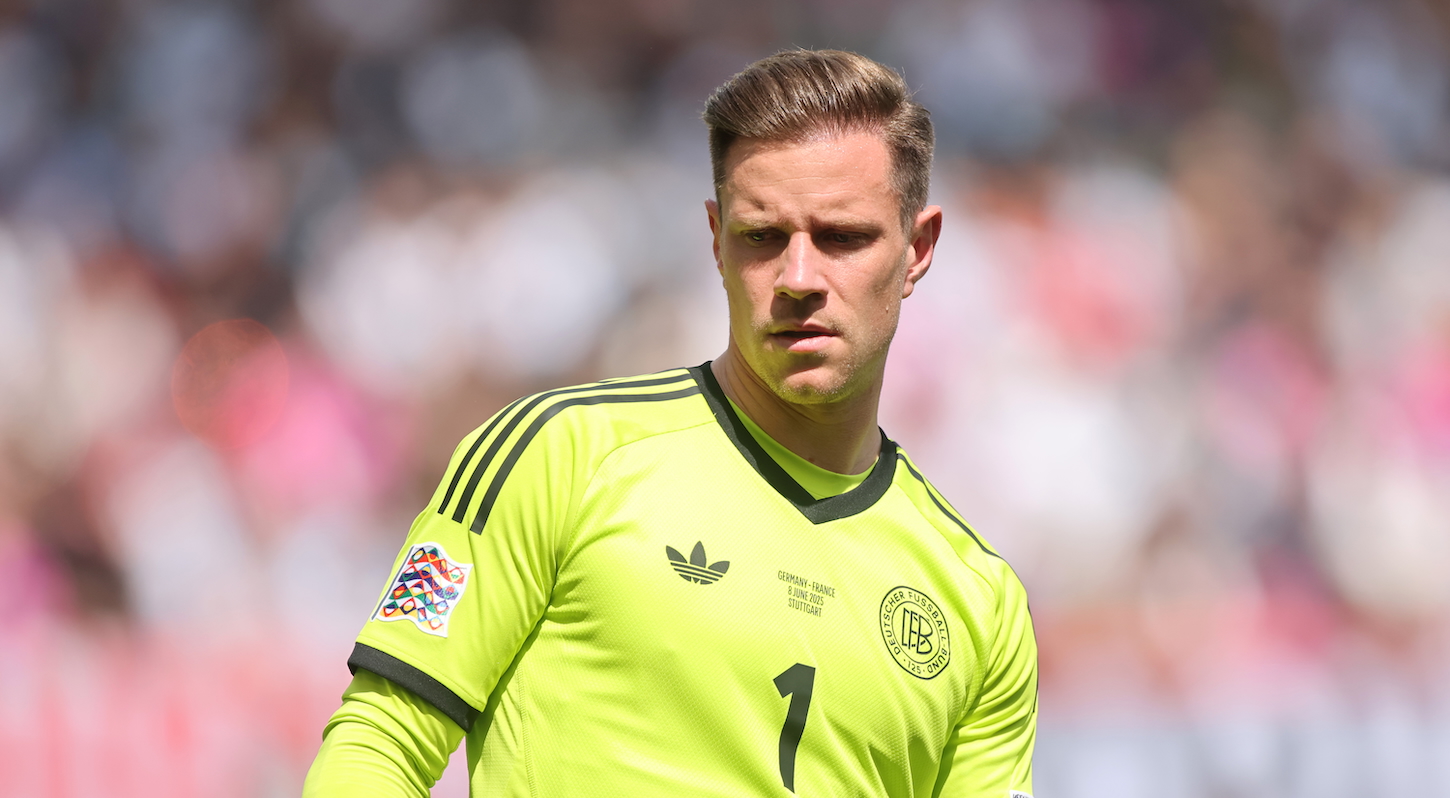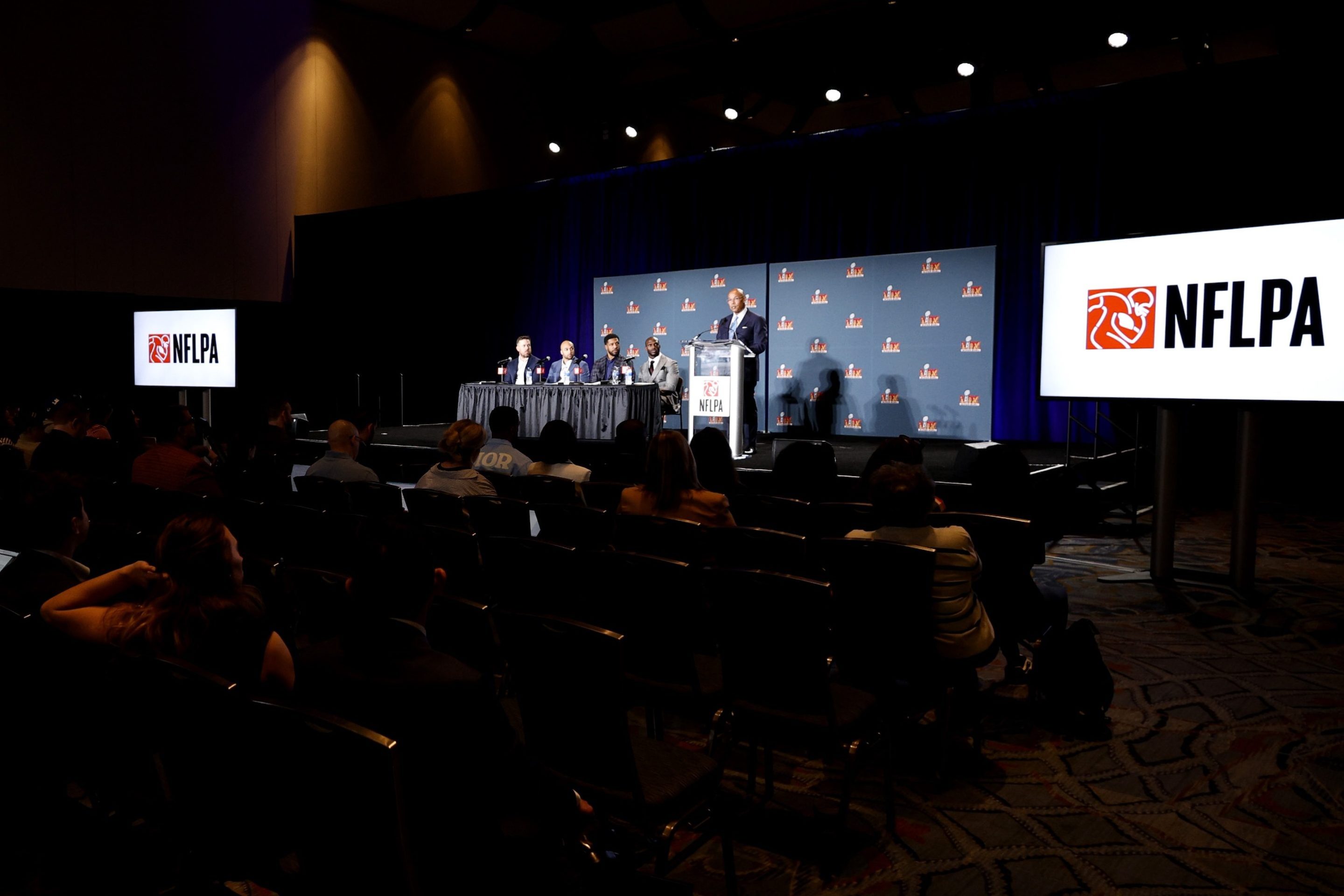What money are WNBA players owed? The league’s biggest names got people asking this question Saturday night, when they all wore “Pay Us What You Owe Us” warmup T-shirts before the All-Star Game in Indianapolis. Two days earlier, the players and the league met for their first in-person collective bargaining session, which players generally left feeling frustrated.
“Based on their most recent proposal, we just aren’t able to get to a place where we’re actually even talking about the same thing,” Breanna Stewart said the day after the meeting. The stakes are big. The labor deal will govern what WNBA commissioner Cathy Engelbert called the league’s “hypergrowth,” a moment of huge new valuations, a $2.2 billion media rights deal set to kick in next year, and a round of expansion that will seriously change the league’s scope. Negotiations for the last CBA lasted into the winter, but the current agreement technically expires at the end of October. Ahead of a big free-agency period in February and the upcoming Toronto and Portland expansion drafts, there's some pressure to get this done before then.
Player turnout at the meeting was reportedly high, and if progress stalled in the labor talks, there was at least some momentum the next day, when the players met again to plan the shirts. The crowd chanted “Pay them!” as Engelbert handed out the All-Star Game MVP trophy. As a means of gaining public support and drawing attention to Caitlin Clark’s $78,066 salary, the shirts were a pretty big PR success.
That’s no small feat. I follow the WNBA for a living and still find it difficult to speak on the league’s finances with much confidence. Very few men on the internet encounter the same difficulty, so that could just be a me thing. But the WNBA’s actual business has always been opaque. For one thing, it’s a private business. There’s also the matter of its ownership structure: 42 percent of the league is owned by the NBA; 42 percent is owned by WNBA owners; and 16 percent belongs to the investors who participated in the league’s $75 million capital raise in 2022, Condoleezza Rice and Baron Davis among them. Even that breakdown is inexact: Some WNBA owners are also NBA owners, so NBA owners really control more than 42 percent, and a few WNBA and NBA owners participated in the capital raise, too.
Accounting in professional sports also tends to be creative. No one really knows how much the WNBA “makes” or “loses,” or how to define those words. Before the 2011 NBA lockout, the NBA claimed that most of its teams lost money, $370 million per season, which the union argued was only an artifact of accounting procedures. A team can “lose” money in one year, even as its asset value balloons. One of the schemes described by the shrewd author of Veeck As In Wreck has to do with the tax breaks you get if you double-classify a player contract as both a business expense and a depreciating asset. I’m not savvy enough to know all the eclectic ways rich people write stuff off, but they do … and they’re the ones writing it off.
They’re also the ones whose voices usually get heard on the subject of WNBA player pay. An Adam Silver quote from 2018 often comes up in Grok-aided arguments: “On average (we’ve lost) over $10 million every year we’ve operated,” he told the Associated Press. The NBA commissioner said this just before negotiations of the last collective bargaining agreement, the timing probably not a coincidence. In the narrative fight, the players have had some success in pointing out that WNBA player salaries are under 10 percent of league revenue, while the NBA’s are 51 percent of “basketball-related income.” The last CBA, ratified in January of 2020, included a revenue-sharing mechanism that would pay players a greater share of league revenue above certain revenue targets, but those targets were cumulative ones, an ill-timed provision agreed to right before a pandemic.
WNBA players are also fighting against a bigger idea: that it’s ridiculous for them to demand more from a league that's lost money. That’s not really the players’ problem, and it’s definitely not their job. The online pay wars hold WNBA players to a curious standard. If your boss said, “We can’t pay you this month because we didn’t make any money,” your response would probably (and rightfully!) not be “That’s on me. Totally fair.” The basic contractual idea at the heart of literally all professional sports is that one party will play sports, and the other party will figure out how to turn that talent into money. If it’s true that owners can’t do this, that the WNBA is an irredeemable drain on the NBA, they should shut the league down.
That they have not done so in 30 years signals to me that owners actually do find something valuable about the WNBA. Perhaps it is current profits, perhaps it is the promise of future profits, perhaps it is reputational. Perhaps it is the chance to get pro basketball in front of new types of fans. Thanks to the WNBA, many more people know who Brandin Podziemski is. Fever president Kelly Krauskopf said in an interview this spring that something like 95 percent of people who went to a Fever game last year had not bought a ticket to see the Pacers. Whatever the benefits of operating the WNBA are, they’re evidently great enough to outweigh the cost.
Reply guys obsessed with operating profits generally don't watch women’s sports, but few of them seem to watch or follow any men’s sports either. If it’s a new era for the WNBA, this is still an old sports labor fight: The owners say, “You’d have no league without us, so you have no leverage here,” and the athletes say, “You'd have no league without us, so yes we do.”
This time, players have some extra leverage afforded to them by the new, highly public numbers on their side. The league’s new 11-year, $2.2 billion TV deal will be its largest source of revenue, and that number is classic mushy WNBA accounting; the WNBA’s broadcast deals are negotiated in the same package as the NBA’s, so the $2.2 billion is just some value the NBA has assigned to it. But we know for certain that people are willing to pay $250 million for a WNBA team, because a bunch of people just did that. In an industry where a lot of numbers are just something someone wrote on Forbes.com, those are refreshingly real numbers, too.
The league is set to receive hundreds of millions in expansion fees from its five new teams over the next five years, and that money tends not to go to players. The NBA’s CBA excludes expansion fees from the BRI pool that determines the salary cap each year, and some recent remarks from WNBPA president Nneka Ogwumike suggest this has been a topic of discussion in their negotiations.
“It’s interesting that there’s a $250 million expansion fee, and there’s no openness to have that be reflected in revenue share that goes to the players,” Ogwumike said last week, ahead of the in-person meeting. You can see why that's usually the case in sports: These are more like one-time payments than actual revenue streams a league can depend on. (Unless the league is MLS, and the plan is actually to expand every year.) But for a while now, the union has alluded to its interest in an “equity-based model that grows and evolves with the league’s increased business success,” perhaps something a little different from the status quo, like the player equity pool in the offseason league Unrivaled. Either way, if the players want to come to the bargaining table with proof of the league’s strong long-term financial prospects, they could do worse than a bunch of rich guys jostling to fork up the cash.
Since I’ve mentioned MLS franchise fees, it’s only right to grant that billionaires make fishy investments all the time, and they are not such geniuses that they don’t often get caught up in WeWork-style nonsense. But there doesn’t seem to be a ton of magical thinking here. The WNBA’s core revenue streams are all definitely growing. Its media deal will keep it visible and accessible for a long time (this has been one criticism of MLS’s big Apple TV deal), and basically any person in women’s sports business will tell you that there’s still a lot of untapped commercial opportunity. They bring up Netflix documentaries, more sponsorships, and cool merch that isn't made by Fanatics. However their dreams for the financial future of women’s basketball look, they’re filled with dollar signs. The players know this, too.
